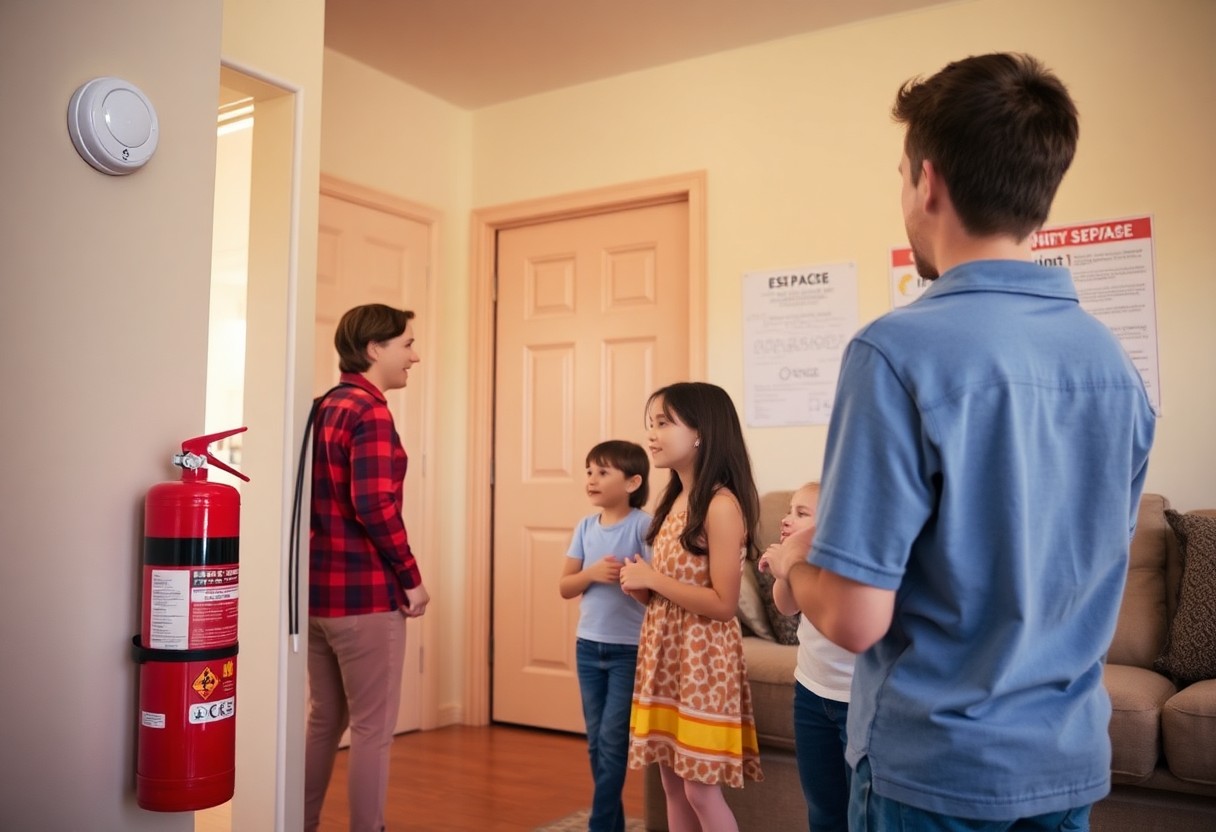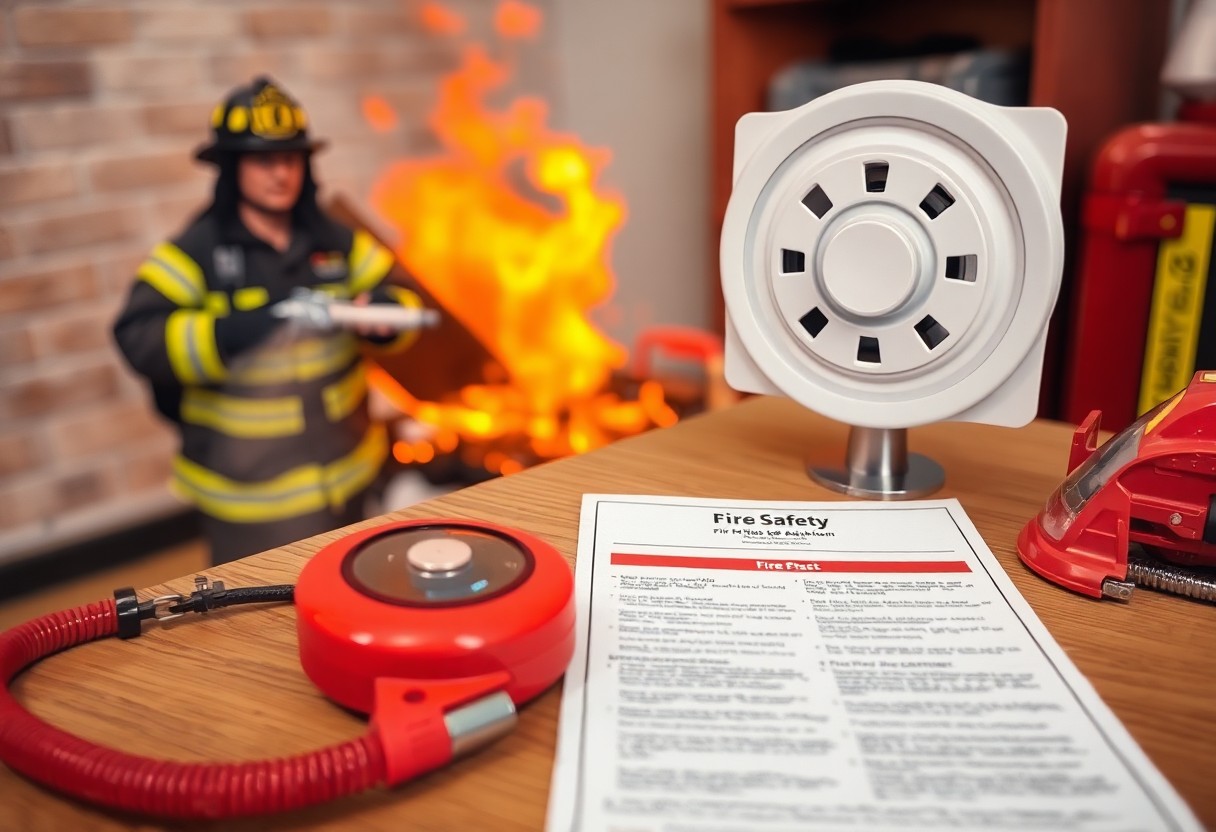Just like any homeowner, you want to ensure that your home is a safe haven for your family. Fire safety is an important aspect of protecting your loved ones and your property from the devastating effects of fire. In this ultimate guide, you will discover practical tips and strategies that will empower you to take proactive steps in preventing fire hazards. From understanding fire risks to implementing effective safety measures, this guide will help you create a safer environment for you and your family.
Understanding Fire Safety
Your understanding of fire safety is vital in protecting your home and loved ones. It encompasses recognizing potential hazards, implementing preventive measures, and knowing emergency protocols. By being proactive and educated about fire safety, you can significantly reduce risks and enhance your family’s safety. Awareness and preparedness are your best defenses against fire threats.
Types of Fires
Your ability to identify different types of fires can help you respond effectively. Here are some common classifications:
- Class A: Ordinary combustible materials (wood, paper)
- Class B: Flammable liquids (gasoline, oil)
- Class C: Electrical fires (wiring, appliances)
- Class D: Metals (magnesium, sodium)
- Class K: Cooking oils and fats (kitchen fires)
This classification enables you to be prepared and know how to combat each fire type safely.
| Fire Class | Examples |
|---|---|
| Class A | Wood, paper |
| Class B | Gasoline, oil |
| Class C | Electrical appliances |
| Class D | Metal shavings |
| Class K | Cooking oils |
Factors That Contribute to Fire Risks
Assuming your environment is safe may lead to unexpected fire hazards. Multiple factors contribute to fire risks that you should be aware of:
- Neglected electrical systems
- Improper disposal of flammable materials
- Lack of smoke detectors
- Cluttered spaces that hinder escape
- Kitchen accidents during cooking
Perceiving these risks allows you to take preemptive action and safeguard your household.
This knowledge of factors that contribute to fire risks is imperative for your home safety. Regularly assessing your surroundings can help mitigate potential threats. Here’s a concise list of preventive measures you can take:
- Conduct regular maintenance on appliances
- Store flammable materials properly
- Install and test smoke alarms
- Keep escape routes clear
- Monitor cooking activities closely
Perceiving these precautions as part of your routine can significantly reduce fire risks.
Essential Fire Safety Tips
You should prioritize fire safety in your home to protect your family and belongings. Implement these important tips:
- Install smoke alarms on every level of your home, testing them monthly.
- Keep a fire extinguisher accessible in case of emergencies.
- Develop and practice a home escape plan with your family.
- Avoid overloading electrical outlets and regularly check for faulty wiring.
- Store flammable materials safely and away from heat sources.
Perceiving these as standard practices will significantly reduce fire risks in your home.
Home Safety Measures
Clearly, implementing home safety measures is important to prevent fires. Ensure that your smoke alarms are functioning and strategically placed throughout your home. Establish designated fire escape routes, and keep pathways clear and accessible in case of an emergency. Additionally, routinely inspect appliances and electrical wiring to identify any potential hazards.
Family Preparedness
One effective way to safeguard your family is through robust preparation for fire emergencies. Conduct regular fire drills to ensure everyone knows the escape routes and assembly points. Encourage open discussions about fire safety, including how to respond when alarms sound. This familiarity will help reduce panic during real emergency situations.
Measures taken for family preparedness can significantly influence your household’s safety during a fire. Create an emergency kit that includes important items such as water, snacks, and a flashlight, and review it regularly. Assign roles to each family member for specific responsibilities, ensuring everyone knows what to do. Cultivating this awareness promotes a proactive approach to fire risks, enhancing your family’s readiness and resilience.
Step-by-Step Fire Prevention Guide
It is vital to implement effective fire prevention strategies to safeguard your home and family. Below is a step-by-step guide to help you prevent fires:
| Step | Action |
| 1 | Install smoke alarms on every floor and test them monthly. |
| 2 | Create a fire escape plan and practice it regularly. |
| 3 | Avoid overloading electrical outlets. |
| 4 | Keep flammable materials away from heat sources. |
| 5 | Have fire extinguishers accessible in key areas. |
Creating a Fire Escape Plan
Assuming you want to protect your family, establishing a fire escape plan is vital. Identify at least two exit routes from each room and designate a meeting point outside where everyone can gather. Practicing this plan regularly ensures that everyone knows what to do in case of a fire, reducing panic during emergencies.
Regular Fire Safety Maintenance
Now is the time to ensure your fire safety equipment is in top shape. This includes checking smoke alarms, testing fire extinguishers, and inspecting wiring and heaters for potential hazards. Regular maintenance can significantly reduce the risk of fire in your home.
Fire safety maintenance involves more than just checking alarms and extinguishers; it’s about forming a habit of vigilance. Set a schedule to inspect these devices monthly, change batteries as needed, and replace expired fire extinguishers. Additionally, assess your home for possible fire hazards, such as frayed wires or blocked exits, and address them promptly. By incorporating these tasks into your routine, you contribute to a safer living environment for you and your loved ones.
Pros and Cons of Fire Safety Equipment
After evaluating fire safety equipment, it’s imperative to understand the advantages and disadvantages. This knowledge helps you make informed decisions about what is best for your home’s safety.
| Cons | |
| Can save lives | Requires regular maintenance |
| Reduces property damage | Some can be expensive |
| Easy to install | May give false alarms |
| Increases insurance savings | Limited lifespan |
| Provides peace of mind | Need to be properly trained |
| Minimal space required | May not cover all fire types |
| Widely available | Can malfunction or be misused |
| Supports community safety | Maintenance can be overlooked |
| Gives early warning | Sometimes hard to hear in noisy environments |
| Helps prevent panic | Requires user familiarity |
Smoke Detectors
Cons of smoke detectors include the possibility of false alarms, which may lead to complacency in emergencies. Though imperative for early warning, their sensitivity can trigger unnecessary alerts. Additionally, they require regular battery replacements and maintenance to ensure functionality, which can be neglected in busy households.
Fire Extinguishers
Even though fire extinguishers are crucial tools for controlling small fires, they come with certain drawbacks. Many people may not know how to use them properly, and regular maintenance is necessary to ensure they are in working condition. Moreover, they have a limited range and can be ineffective against larger, more intense blazes.
Pros of fire extinguishers include their ability to provide quick response during a fire, giving you the chance to control it before it spreads. They are portable and can be easily stored throughout your home, making it convenient to access in an emergency. Knowing how to operate a fire extinguisher can be the difference between a small incident and a devastating situation.
Fire Safety During Emergencies
Once again, being prepared for a fire emergency is necessary to safeguard your home and family. Having a plan in place that includes escape routes, designated meeting points, and knowledge of how to use fire extinguishers can make all the difference when every second counts. Familiarize yourself with the procedures for managing a fire incident to enhance your safety and ensure your loved ones know how to react swiftly and effectively.
Responding to a Fire
While encountering a fire, your immediate response can significantly impact your safety. Quickly assess the situation: if the fire is manageable and you have been trained to use a fire extinguisher, you may attempt to control it. However, if the flames have spread or smoke is overwhelming, evacuate your home immediately, closing doors behind you to slow down the fire’s progress. Prioritize getting yourself and your family to safety above all else.
Communicating with Emergency Services
Safety is not only about evacuation but also about effectively informing emergency services. Once you are in a safe location, you should contact the fire department to report the incident. Providing clear and concise information is vital to ensure they understand the urgency of your situation.
This includes your precise location, the nature of the fire, and any details that could aid the firefighters, such as whether anyone is trapped inside. Keeping your phone call direct and informative will help emergency responders arrive quickly and prepared to address the situation, ultimately helping protect your property and loved ones.
Additional Resources and Support
Now that you have a solid foundation in fire safety, it’s important to explore additional resources and support that can help you further protect your home and family. Accessing local services and online programs can enhance your knowledge, providing you with practical tools and guidance to ensure your safety measures are effective and up-to-date.
Local Fire Departments
Local fire departments are invaluable resources for fire safety education and support. You can contact them to learn about fire prevention programs, request home safety evaluations, or even schedule fire drills with your family. Many fire departments also offer community classes on fire safety and the use of fire extinguishers.
Online Fire Safety Programs
Fire safety education is readily available through various online programs designed to enhance your understanding of fire prevention and emergency response.
To effectively utilize these programs, explore interactive courses and informative webinars that cater to your specific needs. You can find easily accessible resources that cover a range of topics, from basic fire safety tips to comprehensive emergency preparedness plans. These online tools empower you to learn at your own pace while ensuring that you are equipped with knowledge to safeguard your loved ones and property. Regularly updating your knowledge through these platforms helps you stay aware of the latest fire safety practices and strategies.
Final Words
Following this guide, you now have necessary knowledge to enhance fire safety in your home and protect your loved ones. By implementing preventive measures, regularly maintaining smoke detectors, and creating an emergency plan, you will create a safer living environment. Take the time to educate yourself and your family about fire hazards and safety practices. Your proactive approach can significantly reduce the risk of fire-related incidents, allowing you to focus on what truly matters—your family’s well-being.


